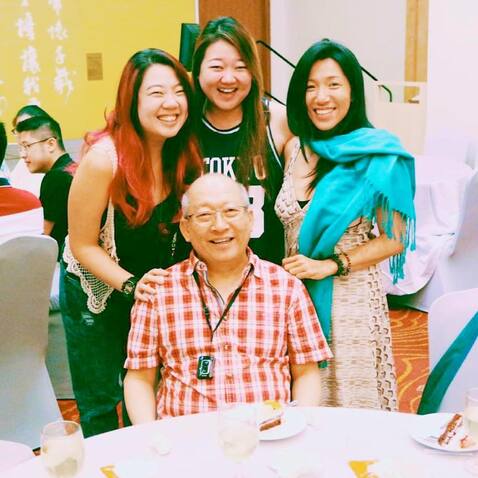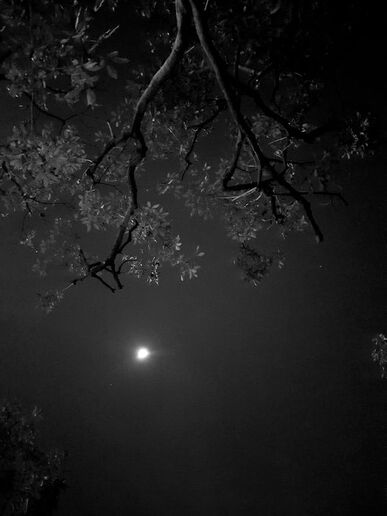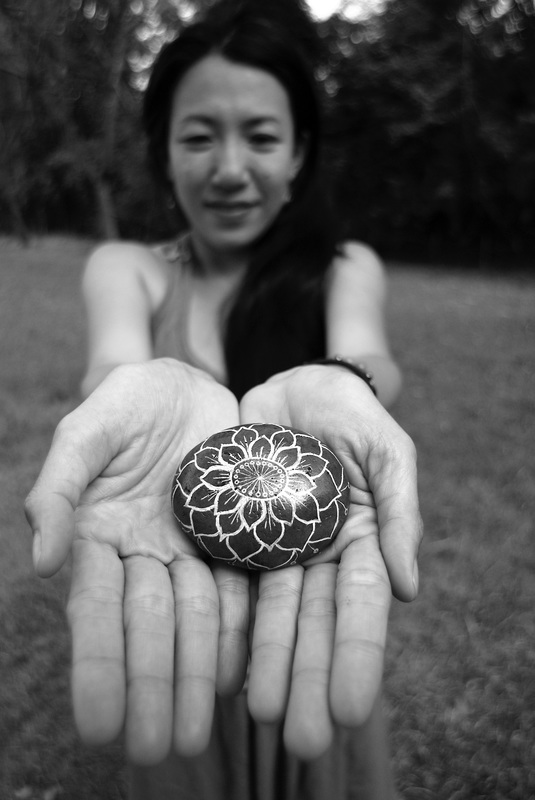|
Another year passed
Three years on One more candle lit Life has kept all of us moving Pushing us forward and onwards At times against the grain In my attempt for redemption I learn about forgiveness And how to extend it to myself In my search for vindication I learn that Rage Burns on both ends In my promise to start over I learn that beginnings Exist in every moment In my strife to trust again I found faith in the spinning World of uncertainty In my vow to not abandon myself I found strength In my solitude Sometimes I still get sad And lonely and angry Sometimes I feel my heart So broken it will never be whole Sometimes the earth cracks open The shadows of the depths cold and dark I light another candle Offer another prayer I look for the Moon Or a star I find your whisperings In every glimmer To bear witness As I lay Haven and harbour In your shelter Navel Radiation Workshop 3/3
The final class of the navel radiation series. Click the link to watch the full class on youtube https://youtu.be/o3oauRNkn6Y For this final class, we tap into more movement sequences (expansion, contraction, spiral movements) to help guide us towards a deeper sensing of our navel space. The navel space, which as mentioned in the previous 2 classes, lies at the centre of intrinsic and extrinsic movement. We also explore how this navel centre, on a macro level, can be extended to the idea of a bigger source - the earth’s centre. The class ends with exploratory movement and a short restorative exercise. When we are able to move in an embodied manner from our navel centre, we will find greater grounding, ease, connectedness and a sense of being. Props required: - 1 yoga mat - 1 pair of socks - 1 weighted ball (or water bottle) - 1 cushion (or bolster) - 1 blanket Navel Radiation Workshop 2/3
The second class of the navel radiation series. Click the link to watch the full class on youtube https://youtu.be/GKTokdJALho This session starts off with a developmental explanation of how we come to become who we are - from the meeting of the sperm and egg, implantation, development of fetus, vital organs, and intricate features. We hear how the navel is our centre, and the seed by which intrinsic movement gives rise to extrinsic movement - and bi-directionally, from extrinsic movement to intrinsic movement. The session starts off with the use of touch, to bring greater felt sense to the different parts of our body and their relationship to the navel centre. We then engage in different movement sequences to engage the entire body (all our 6 limbs), with the focus on initiating movement from the navel centre. Props required: - 1 yoga mat - 1 pair of socks - 1 weighted ball (or water bottle) - 1 cushion (or bolster) - 1 blanket Navel Radiation Workshop 1/3
The first class of the navel radiation series. Click https://youtu.be/f32o5sOzvwk to join the full class on youtube. In today’s session, we learn about the core of our body. In the fitness realm, there's so much emphasis on the core. Most of the time, the core was associated with the much desired AB(S)dominal muscles. Many modalities also explore pelvic lumbar stability, and the iliopsoas complex. Through the years of teaching and exploration into Body Mind Centering (BMC), I've began to explore the concept of the core as the centre of our "being-ness", located behind the navel space. It is the space in which the umbilical chord connects each of us to our mother during in-utero fetus days. From a developmental perspective, this very core is also the seed in which all the other limbs of our body (arms, legs, head and tail) develops from. It is the centre between the front and back, the top and bottom half, and the 2 sides of our body. It is the centre in our 3-dimensional body moving through 3-dimensional space. We start off the session with a navel radiation meditation, followed by sensing how the quality of conventional vinyasa movement changes when we initiate such movement from the core, and end off the session with exploratory movement with the weighted ball. Props required: - 1 pair of socks - 1 weighted ball (or water bottle) Creating Safety Workshop 3/3
The final class of the creating safety workshop. Click https://youtu.be/mGuibTfZ4KA to join the full class on youtube. Our sub-occipital muscles tends to hold a lot of stress because of the function it plays in keeping our heads upright as bipeds, and its association with our eyes. In this session, we explore an exercise to release tension in the sub-occipital muscles as we lean into the support of gravity, and find full body integration. In the session, we also explore movement across 3-dimensional planes, bringing awareness to our body’s mid-line and our anatomical structures. Props required: - 1 yoga mat - 1 strap (or scarf) - 1 blanket - 1 yoga block - 1 weighted ball (or water bottle) Creating Safety Workshop 2/3
This is 2 out of 3 classes of the Creating Safety Workshop conducted last year. Click https://youtu.be/cnvKjk5IBJw to join the full class on youtube. This second class of the creating safety workshop starts off with exploring a sense of integration between our individual bodies (the micro), with that of the earth (the macro). We tap into body weight, and the forces of gravity and rebound to find a sense of ease, support and body awareness. I also speak about yielding and collapsing, and how through the somatic exploration exercises, we can strike a healthy symbiotic relationship between these two states. In this sense, yielding would not equate to the over-activation of our nervous system, and collapsing would not equate to the total lapsing or shut down of our nervous systems. The ability of our nervous systems to calibrate and shift itself flexibly between these two states translates to a greater sense of being. We also explore feet work and a somatic play exercise with a chair. Props required: - 1 yoga mat - 1 blanket - 1 yoga block - 1 weighted ball (or water bottle) - 1 chair This is 1 out of 3 classes of my Creating Safety Workshop conducted last year.
Click https://youtu.be/Y_qlnvdZiTQ to join the full class on youtube. In the first class of the reating safety workshop, we explore a series of exercises and 3-dimensional movement from head to toe to build body awareness and a sense of felt safety. We also explore the use of weight, breath, and support of gravity. Props required: - 1 Yoga Mat - 2 Blankets . . . . . . . . In the weeks leading up, I’ll be sharing a free somatic class weekly via my youtube channel. These classes were conducted last year through zoom. May these videos provide a weekly mind-body reset, room for your curious explorations and comfort in these uncertain times. If you would like to find out more about somatic work, feel free to write in to me too. I open my eyes
To the light coming through the windows The sound of koels through the trees Morning traffic running through the streets I force my lungs into space Push into verticality from gravity Search the upswell for a reason to try again Today Another day like yesterday Start over again So tomorrow will be better Put on my gear Put on my smile Put on my gig For time is commodity in the roulette called Life Lingering there in the shadows Heavy, looming darkness Taunting, mocking Spinning tales Of un-belonging Of never being whole Of never being met Of being just too much Darkness says I’ve been in your dreams I’ve been in your wake Time and again you’ve looked away Now I’m in your head Now I’m under your skin Now I’m screaming in your ears Now let’s see you plead! In the deafening silence of suffering The graveyard of hearts, wings clipped Drenched in the dense cold liquid of fear Shackled by the rusted chains of wants Undress your armour of pretend courage Untether from your longings and heartaches Put out the fire of your rage Let it go let it go let it all go! Let’s plunge … Into the darkness of metamorphosis A realm dense with void A playground of pain to revel in Till there’s no more ... Oh, the relief, the catharsis! Of never having to care again Of never having to try to do better Of never having to seek an-other But there…in the distance A glint of an ember An echo of reason In the balm of being Through the dark cold swamp of shadows I got down on my knees And offered my mangled heart for keeps For Love still deserves a place by the light Exploring Pelvic Balance for Back Pain Found this old video from the archives. A little exploration of pelvic balance for back pain. In the video, I also speak about the importance of something very fundamental - how we sit. How are your sitting bones landing on the chair when you take a seat? Or are you loading on your tailbone instead? When our body is supported by our sitting bones rather than our tailbone, we free up the spine from overloading and slumping into our lower back (and pushes our head forward) which can result in back pain. It also allows for a sense of differentiation between our pelvis and leg bones, allowing our weight to be released into gravity for greater ease and range of motion. As we move through our day, we can also begin to notice the position of our pelvis. Do we tend to tuck our pelvis under (fatigue / withdrawal) or push our hips forward (rushed / fight or flight)? Are your knees locked or hyperextended? Adjusting all of these little nuances can too alleviate back tension and discomfort. I hope you enjoy this little practice. Props Needed: - 1 Yoga Strap - 1 Yoga Block
Recordings for August's run of Somatic Embodiment Lab is now available for purchase!
In the sessions, we explore mind-body techniques to regulate our stress response. A wonderful platform to tune in and harness our coping mechanisms in these trying times. Session breakdown: Session 1 - Hip Mobility Session 2 - Therapeutic Applications of the Vagus Nerve Session 3 - Demystifying Heart Opening: Embodiment of the Heart & Lungs Session 4 - The Unified Diaphragm: Resonance between Rib Cage & Pelvis $90 for all 4 recordings or $25 per recording.
A recap on August's Somatic Embodiment Lab Series. I had a great time sharing and exploring alongside all of you who joined me. Stay tuned for the next lab series coming up! Looking forward to seeing both familiar and new faces!
Leave a comment if there’s a topic you’d like to explore in the next series
Somatics meet Ashtanga!
Live chat with @tonyvuhuynh in which we delve into how and where yoga has led us, our pain journey and our authenticity, as well as our perspectives on guiding people on the healing journey. - - - - - - - John E. Sarno is the author referred to in this video with his book Healing Back Pain. Bonnie Bainbridge Cohen is the founder of Body Mind Centering. The quote referred in this video - "The mind is like the wind and the body like the sand; if you want to know how the wind is blowing, you can look at the sand."
Click to set custom HTML
Authenticism generally doesn't come about by willing yourself into a preconceived idea of who you should be or how you want others to see you, but an intimate awareness of how truth permeates through all of our being. Movement precedes language. Our body is the vessel of the stories we hold. And the walk comes before the talk. Being real is a direct experience, not simply a label.
If you're feeling neck and shoulder tightness or pain, here is a video on how to give yourself a liver flush to release the tension. Best to try this in a seated position.
What does being Connected to the Body mean?
Being connected with the body means that our actions are not driven purely by intellectual cognition and our reality is informed by more than what the forebrain tells us. It is our ability to hold the dichotomy of both bottom-up and top-down perspectives... the polarities of what's within and what's outside of ourselves. Coming into this relational field helps us recognise connection, cultivate empathy. and embody the wisdom of impermanence. We learn to let go of belief systems that shackle us, and open our curiosity to phenomenons that may fall outside our comfort zone. Learn more about connection to the body. Join me in my next Trauma-informed Somatic Therapy & Bodywork Training 31 May to 9 June Early Bird Promo ends today 2nd May! DM me for details or email to [email protected] for more details.
In somatic explorations, we become curious in our relationship with both the external environment as well as our internal being.
Could the tightness that you’re feeling in your back be caused by your organs sitting in the front of the body? When our body isn’t able to provide a conducive environment for the organs and gut tube to function and move optimally in relationship with one another, they are not able to yield into the support of gravity. This can also happen when our nervous system can't get into the rest and digest mode. Our organs become sticky, frozen, inanimate, braced. And they sit at the front of the abdominal cavity and pull into our lower back. This might cause our whole body to come into a holding pattern of bracing against gravity. Creating more thoracic mobility and releasing the pelvic floor helps to bring the respiratory and pelvic diaphragms back into resonance. Want to know more? Join me at my next Somatic Movement & Therapy Training on Polyvagal Theory in Somatic Applications. Happening 31 May to 9 June. Work hard. Eliminate competition. It’s a dog-eat-dog world. Every man for himself. Make more money, Drive bigger cars. Work out. Consume. We are told to believe that we can outwit nature by constantly doing doing doing, setting ourselves to always be in fight or flight. What if it’s not a binary process of the last man standing, but a recognition of our innate relational ability to co-exist. That to thrive is to create symbiotic relationships with self and others. That resilience is not so much about resisting, but to let go. That transformation comes through our vulnerability to BE, to rest, to digest, to adapt, to connect, to trust.
Last 2 spots left for this weekend's mini-immersion in Trauma-informed Somatic Yoga.
As yoga becomes increasingly popular in therapeutic settings, it’s important that teachers and professionals understand not just that yoga offers healing opportunities to those recovering from trauma, but how and why it can help. This course offers the unique opportunity to learn basic foundational frameworks, apply this knowledge to both individual and group cases, and identify how yoga can meet the needs of diverse populations. This course is designed for yoga and mental health practitioners seeking to share yoga with people who have experienced trauma. You might be teaching in a studio, private practice, or less conventional setting, or you may be a practitioner seeking depth in your personal practice. If you’re looking for a grounded, practical understanding of how you can use movement and touch work to support folks with trauma recovery, this workshop will serve as an excellent introduction to this work Thank you @mandalapsychology for the quote feature. |
Daphne Chua
Registered Yoga Therapist, Somatic Movement Educator, Bodyworker, Yoga Teacher Trainer
December 2021
Categories |



 RSS Feed
RSS Feed
